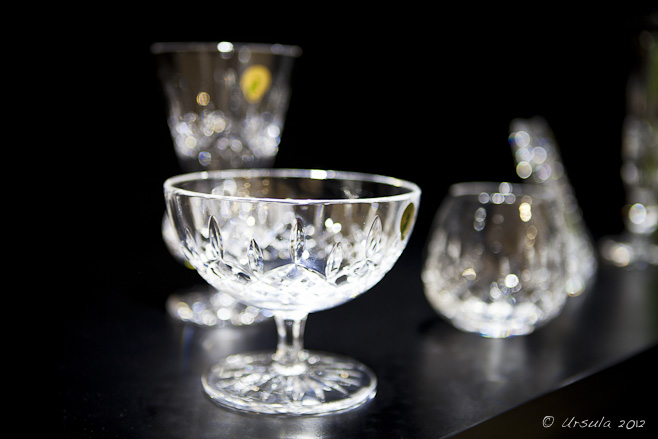 Crystalware Our travels can be a little haphazard sometimes.
We had work and family business in England, so we decided to go walking in the south-west of Ireland. (More about that soon.) Once I had booked our walking trip, I contacted an old friend and colleague from Thailand who had moved back to Ireland some years ago, to see if we would have the opportunity to cross paths. He and his family are in Waterford, which is not far from the Irish Ferries’ dock at Rosslare. So, that was a good enough excuse for a stopover, en route to County Kerry.
Now, as it turns out, Waterford is Ireland’s oldest city, having been established by the Vikings in 914. They called it Veðrafjǫrðr; “Ram Fjord” or “windy fjord”, and sections of the city walls they built still stand.
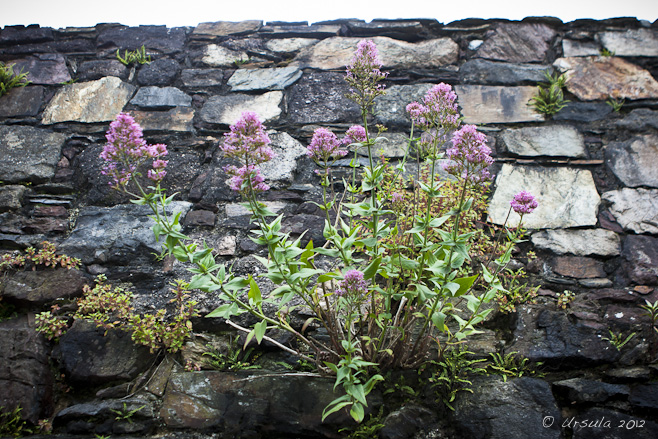 New growth on an ancient Viking wall ~ Waterford is an interesting mix. 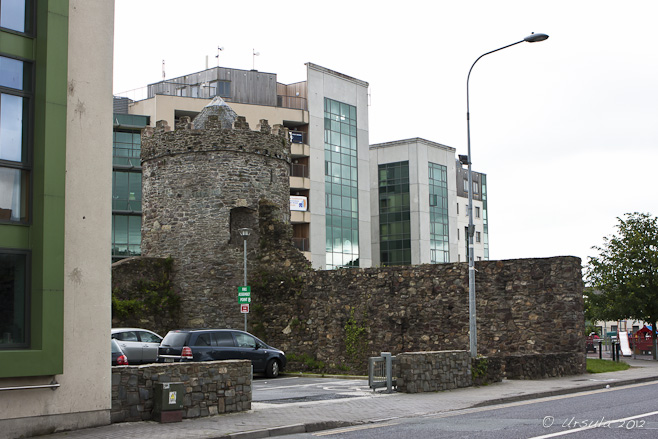 Bits of the remaining Viking wall and towers, with later Norman “improvements”, are scattered around the charming and modern city centre of Waterford. After successive attempts, the King of Leinster, with the aid of Norman mercenaries under Richard de Clare, Second Earl of Pembroke (Strongbow), took Waterford in 1170, marking the entry of the Anglo-Normans into Ireland. The rest, as they say, is history.
I didn’t know any of this when I made our plans to stay there. Nor did I realise it was, and is again, home to the Waterford Crystal factory. I’m not a particular fan of cut crystal, but as we were going to be there for a a day, a visit to the factory seemed like a good plan.
As it turned out, watching crystal glassware being made by true craftsmen was an interesting and worthwhile experience.
 The modern crystal manufacturing plant and showroom in downtown Waterford was opened in June 2010.  Tours of the facility run regularly. Alison, our guide, gives us a brief rundown of the company history.  Wooden molds are used for limited edition items; steel is used for production items.  The pear-wood moulds for crystal blowing are quickly charred by the molten glass.  Making crystal is skilled and labour-intensive. The “blowers” have served apprenticeships of up to six years and need to handle more than one task.  The furnaces for melting the glass mixture are over 1,200 degrees centigrade.  Turning and shaping the “gob” of molten glass.  “The craftsmen have to be, not only capable of working in a team, they also have to be quite athletic.” (https://www.waterfordcrystalworld.com)  The newly-blown vase is cut away from the blower.  Glassware is annealed on a slow-moving belt through special ovens.  Water acts as a coolant as the excess glass is trimmed off …  … and as the edges are ground smooth.  Marking up patterns can be as “easy” as markers strapped to a turntable.  A selection of cut and partially cut crystal trophies and vases – including a London Olympic Games trophy, sit on the marking table.  Cutting the crystal takes strength and concentration.  Water is again used as a coolant.  A cutter is happy to show off his work; it makes a break from the concentration!  “Well, I’ve been doin’ it for on forty-four years.”  A display of some of the special Waterford pieces.  A work station with engraving tools.  Art, craft and work…  Waterford shop display room.  Sales staff check inventory.  Chandeliers over a table set with Waterford crystal and table-ware from the partner-companies Royal Doultan and Wedgwood.  Carved crystal stemware.  I’m still not cut-crystal’s biggest fan, but I’ve gained a new appreciation for the work and skill that goes into it. I’m still not cut-crystal’s biggest fan, but I’ve gained a new appreciation for the work and skill that goes into it.
And we did buy one or two pieces…
Pictures: 16June2012
Posted in Craft,Fine Arts,History,Ireland,Travel,WorkTags: arts and crafts,blog,Ireland,Photo Blog,travel,Travel Blog,Ursula Wall,work
 Offerings to ancient Buddhas The beauty (and frustration) of living in Thailand lies in the ability of people to hold mutually incompatible ideas at the same time, and to never speak about some things which everyone knows.
Take Sukhothai, for example: that most revered of ancient Thai cities.
Sukhothai was originally a trade centre, enjoying a degree of autonomy under the various rule of the Mons of Lavo and the Khmer Empire, until becoming the centre of a kingdom in its own right in 1239. Even thought the kingdom only ruled for two hundred years, starting with the upper Chao Phraya valley, by some accounts, it eventually extended north into what is now Laos and south across much of the Isthmus of Kra. Traditional historians see this as the start of Thai history.
But, like everything else in Thailand, it is best not to try to examine concepts too closely. The Sukhothai legend has been invested with national importance and political ideology from the time King Mongkut read it into Thai history in the late nineteenth century. Since then, it has been used to defend the succession of kingdoms from father to son as a form of “Thai democracy”, and as a model of “freedom” from the colonial and Khmer rulers.
The most influential of the Sukhothai rulers, King Ramkhamhaeng, is credited with expanding the empire, inventing the Thai alphabet, and spreading Theravada Buddhism as the official religion. This influence is according to an engraved stone: the Ramkhamhaeng stele, reputedly discovered by King Mongkut in 1883. The authenticity of the inscriptions have been questioned, but if the doubts are proven, then much Thai history is thrown into question.
Whatever truths are buried in the legends, the ruins of the old empire are magnificent. Driving aroung the region, remains of red laterite brick wall, stupas and temples can be seen everywhere. Four separate sites are maintained, as UNESCO World Heritage Sites, under the unwieldly title of “Sukhothai and associated historic towns”.
 Fishing for fish-food: in the moat around Wat Mahathat  Modern tourist ~ ancient ruins. Wat Mahathat, Sukhothai.  Some of the most evocative Buddha images at Wat Mahathat, to my mind, are those which have not been restored.  An imposing white buddha image in the Abhaya mudra – the hand gesture imparting fearlessness or reassurance.  Flowers at the feet of another standing buddha. Wat Mahathat.  Buddha in bhumisparsha mudra , or ‘touching the earth’ hand position.  Everything was rich and green, with lotus – symbols of purity and enlightenment – rising from the muddy moats.  A view of Sukhothai ruins through fresh green trees.  Workers, in long sleeves against the sun, work hard to keep the grounds nice. Of course, they don’t get paid much; I guess the honour is enough.  People bringing tributes and saying prayers to King Ramkhamhaeng the Great. For them, his “greatness” is not in question.  Thai Buddhists are not necessarily vegetarian; for some reason, many people were offering King Ramkhamhaeng pigs’ heads and feet.  Of course, King Ramkhamhaeng is also the recipient of flowers. Karma, an integral part of Hinduism and Buddhism, is another one of those tricky words, and trickier concepts. In Thai, the word for Karma is “kaam” (กรรม), which, if not pronounced correctly becomes a vulgar epithet.
From the Sanskrit, karma can be defined as “the sum of a person’s actions in this and previous states of existence, deciding their fate in future existences”. In Thailand (and other countries in the region) it is not uncommon to see sparrows crowded into cages outside temples. The idea is that you purchase them and release them into freedom, thus buying good Karma for yourself. At Sukhothai, bags of fish and frogs were available for the same purpose.
 Selling Karma: bags of fish and frogs for release back into the wild.  Captured spirits looking for release. I find the idea that you can buy “good Karma” somewhat startling, and cannot help but wonder what capturing the birds, fish, and frogs does to the Karma of the collectors!
 Wooden bridge leading to Wat Sa Si, Sukhothai  Looking through the rough, red laterite at a delicate white buddha. Wat Sa Si.  Flanked by pillars: Buddha, Wat Sa Si, Sukhothai.  Buddha in Vitarka mudra, symbolising intellectual argument and discussion. Wat Traphang Ngoen, Sukhothai.  Back robe detailing: Wat Traphang Ngoen  Buddha Remains ~ Wat Traphang Ngoen  After a morning of clambering around ruins, we arrived back at Wat Mahathat…  … ready for a hot, sweet, stimulant coffee after all that calm.  Beautiful Buddhas, Karma and a Sukhothai king ~ Beautiful Buddhas, Karma and a Sukhothai king ~
And coffee.
Never mind the inconsistencies; you can’t ask much more than that!
Posted in Architecture,History,Museum,Religious Practice,Thailand,TravelTags: ancient,architecture,Bay of Thailand,blog,buddha,buddhism,buddhist,museum,people,Photo Blog,religion,ruins,Sukhothai,Travel Blog,UNESCO,Ursula Wall
 Amazing colours ~ "Amazing Canoeing" ~ Amazing Thailand People can be forgiven for thinking that my husband and I are permanently on holidays.
It is not true! It is just that we spend a lot of time living out of suitcases in interesting locations. Last week, for example, we were living in the lap of four-star luxury on the tropical island of Phuket – thanks to a very special deal that a friend of ours had bought and couldn’t use. But, we spent most of that time tied to our computers. Granted, the fact that it was unseasonably windy and wet – even by rainy season standards – made it easier to stay focussed on work.
Still, we made a point of scheduling some “tourist” time. Monday we took the day off as a reward for diligence, and went on a “Big Boat” trip to the limestone islands of Phang Nga Bay. We were incredibly lucky with our timing: the rain was intermittent, rather than incessant, and the seas were calm. For the two to three days following, Phuket was battered by torrential rains and gale-force winds, and we were again pretty much trapped indoors.
Touring in Thailand is much more enjoyable if you prepare for almost anything, turn your brain into neutral, and take what comes. Put your bathers under your clothes, put valuables in waterproof bags and bring your own towels. Don’t be surprised if your transportation is five minutes early or half an hour late. Be ready to hunch up in the front of a van cab, squashed, with your belongings on your lap, between the person at the door and the gear shift, or wedged in the back of a truck with center-facing seating. Stay good humoured when, almost two hours after your stated collection time, you are still faffing about on the pier and your boat is nowhere in sight…
For even on the pier there are people to meet and things to explore.
 The guides are smiling as they chat with each other and joke with us - clearly this "hanging-around-time" is built into the plan!  Off-season quiet: many shops around the Ao Por pier are closed for the day - or for the season.  Muslim Thais of ethnic Malay origins are common in the south. I was amused because the woman in the yellow headscarf had an anti-Thaksin sticker on her hat. I asked them if they were "yellow shirts" - one of the warring protest factions in Thailand - and it was their turn to look surprised. It seems someone had put the sticker on her hat as a joke, and they were wearing yellow because, by the Thai colour system, that is the colour for Monday!  Wet bags for sale or rent: "Raining today. Sure!"  The hat seller is happy to smile - even though we aren't buying anything.  We are used to unusual road signs, and particularly like the one ahead of speed humps warning about "car jump". This one, exhorting us to "Please wear jacket lift" was new!  One of the staff keeps an eye on the large group of international tourists heading for the Big Boat.  We are not allowed to walk to the boat: we must climb into buses which run us to the end of the pier.  Other tourist boats rafted and waiting - it's going to be a busy day on the bay.  And we are finally off!  Thailand abounds in "unnatural" colours as well as natural ones: Fanta and Coke at the ready Thailand truly is an amazing and colourful place. I’ve visited Ao Phang Nga National Park several times before (always on clear sunny days) and it is unbelievably beautiful. Even in inclement weather, it is impressive. And many of the colours – natural and man-made – still shine through.
 The pink tour boat is going to beat us to Panak Island - the largest of the many islands in the Phang Nga Bay National Park.  Our crew snooze or chat as we make our way to the islands.  Once we are stopped, the boatmen launch the sea kayaks...  ... and passengers are assisted in ...  ... to be paddled off ...  ... to the caves of Koh Panak. Because of the large group, the kayaks went out in two shifts. Once our turn arrived, and we were in our kayak, the winds lifted and the skies opened up. I was very glad my camera was in its water-proof bag, for we looked like drowned rats. My hat went flying into the sea, where I thought it would sink and be lost, but our boatman skilfully brought us around to rescue it, before heading into the dark cave full of bats.
I’ve seen better stalactites, but our boatman was clearly proud of them as he pointed out fancifully-named formations using his head lamp, so we ooh-ed and ah-ed dutifully, snapping bad pictures with our iPhones. At least it was dry, and the bat smell eased off as we paddled further into the cave system.
When we came out, the skies were still gloomy, but the rains had stopped.
 The other tourist boats head off before us, across Phang Nga Bay, under continued grey skies.  Koh Panak meets the bay.  Tourists chat as more Phang Nga Bay islands come into view.  Even cloudy skys cannot diminish the beauty of Koh Hong (Room Island).  If you see a Thai with a camera, you can be sure you will see your own face on a plate or in a shell frame before the day is finished.  Karst mountains ...  ... and caves.  One of the youngest "boatmen": this paddler is still at school.  Meanwhile, in the galley, lunch is being prepared.  Kitchen preparation.  Lunch is ready!  Lunch is a casual affair.  As we head towards Khao Phing Kan and Khao Tapu (otherwise known as James Bond Island) the rains set in again.  Once on Koh Phing Kan, tourists huddle in the shelter of a cave in plastic raincoats...  ... and try to get pictures of the iconic Koh Tapu without getting too wet.  A visitor from Brazil watches the islands go by.  Like something out of a primeval novel, as we sail towards home, countless red-backed sea eagles fill the skies behind us ~  Eagle-eyed: a Brahminy kite looks for food. As if to highlight the contrasts that Thailand offers up, the amazing sight of a veritable flock of birds of prey was shortly followed by head-pounding music and the “Ladyboy Show”. It was hard to know quite what to make of the performers as they shimmied the poles of the upper deck and gyrated around the room in outlandish wigs.
 Taupe pantyhose, black and red g-string and a yellow wig ~  ~ our young worker with the morning clip-board has transformed!  And so, we headed home. Amazing Thailand.
Just Amazing.
Posted in Adventure,Nature,Thailand,TravelTags: Bay of Thailand,blog,boating,boats,day trip,National Park,nature,people,Photo Blog,travel,Travel Blog,Ursula Wall,water
 Outer wall of the Eden Killer Whale Museum Some stories are better than fiction.
In Eden, where we now live, people have had a long relationship with the sea and the sea’s creatures – especially whales.
The earliest inhabitants of the area, the Thawa people of the Yuin nation, conducted ceremonies and feasts in honour of killer whales – orcas – whom they called Beowas; “brothers” or “kin”. Because these mammals are marked black and white like corroboree dancers, they were believed to be warrior ancestors: “reborn from the dreaming to the sea”. This belief was reinforced by the orcas’ practice of herding seals and other sea animals into shallow waters, making them accessible prey for the Thawa.
The first European whalers set up in Twofold Bay in 1828, and the town itself was established not long after. Before the development of petroleum-based products, whale oil was burned for light, or made into clean-burning tapers and candles. It was also used extensively for lubrication, tanning and soap manufacture, while the baleen was used in the making of corsets and parasols.
Of course, in those early days, whaling was a much more even-handed battle, with the shore-based whalers, armed only with harpoons, rowing open wooden boats out after the longer and much heavier right whales and humpbacks.
Some of the Eden whalers had help in their hunt of these massive prey: every year in late autumn, killer whales would swim to Twofold Bay from the waters of Antarctica and wait for the baleen whales to pass on their annual migration north to breed. When baleen whales were found, one of three separate pods of killer whales would routinely alert the men at the Davidson whaling station, assist them in herding – or even killing – the giant animals, and then take their reward of lips and tongue before leaving the rest of the carcass to the whalers. Although orcas routinely hunt in well-organized packs, this is the only place in the world where they have collaborated with man. There are numerous, well-documented stories of the symbiotic relationship between the whalers and the orcas; a relationship which started to break down in the early 1900’s.
The best known and most loved of these orcas was Old Tom, a 22-foot male who was reputed to be well over 70 when he died. (Some scientists have claimed that tooth-ring study demonstrates he was about 35, and they suggest that more than one whale was responsible for sightings of Old Tom’s distinctive dorsal fin over a period of 70+ years. Other scientists say ‘ageing’ of mature whales is an inexact science at best, and no one knows how long killers live.) When his body floated into Snug Harbour in 1930, it was decided to preserve his remains, and build a museum to house them.
This single event marked the beginning of the Eden Killer Whale Museum, and signalled the end of Eden’s whale industry.
 Almost abstract: Old Tom reflecting his museum  Visitors read the story of Old Tom from behind the bones of his spine.  False killer whale (seudorca crassidens) skeleton: about half the size of a "real" killer whale.  Anyone who has visited Australia will have met the adorable sniffer beagles who work the customs' beat. Of course, with the sixth longest coastlines in the world (25,760 km according to the CIA World Factbook), Australia puts a lot of effort into marine border protection.  Lifeboats on display: Eden Killer Whale Museum  Part of a derrick crane: load limit, 5 tonnes.  The Lighthouse: Eden Killer Whale Museum.  Scrimshaw, the practice of etching a design into whalebone or tooth, was a common leisure activity for whalers in the days when ivory was a legal, plentiful commodity.  Twofold Bay from the Eden Killer Whale Museum.  Whale Vertabrae  Printout from an old depth sounder.  The Eden Killer Whale Museum derrick crane and lighthouse.  Light winds and a blue sky.  Mirror reverse: The Giftshop  Along the street, in front of the museum, a series of seven mosaics depict Eden's history, from the original residents: the Thawa people of the Yuin nation, to the present.  The Whaler and their Lighthouse: Eden Killer Whale Museum. The orcas disappeared from Eden waters after the death of Old Tom and are a much rarer sight these days. The last Eden whaling operation closed in the late 1920s, when baleen whale numbers were already declining from operations elsewhere (The Davidson station usually netted about eight whales a year: significantly fewer than the larger commercial operations, even at that time.) Whales and dolphins have been protected in Australian waters since 1979, and every year the humpbacks pass through Eden’s sapphire blue waters in spring – with no whalers and very few orcas to harass them.
We hope to be back to catch some – with our cameras – on their next passage.
 Maybe we’ll even see descendants of Old Tom! Maybe we’ll even see descendants of Old Tom!
Till next time.
Pictures and visit: 18 March 2012
Posted in Australia,Museum,Nature,WorkTags: blog,boats,fishing,fishing boats,museum,nature,Photo Blog,travel,Travel Blog,Ursula Wall,whales
 Carved Soap in decorated wooden boxes: Mae Nam's Walking Street “Eating, sleeping and shopping.”
If you ask a Thai to name the country’s three favourite pastimes, this is what they will tell you. “Chatting” (คุยกันเล่น) comes a close fourth. As a general rule, Thai people value relaxing and having a good time.
I was reminded of this on our recent visit to Koh Samui. When we are on the island, we get so busy coping with the vagaries of dealing with tradespeople and agents that we don’t explore the “everyday” as often as we might. Every week nearby towns close a stretch of narrow roadway to traffic and let the already-crouded-markets flow into the roadway. Here, Thais (and visitors) can indulge in eating, shopping and chatting to their hearts’ content.
 The Wednesday evening Mae Nam Walking Street is still relatively quiet. A friend of mine who lives on the island reminded us about the Wednesday evening “Walking Street” in the little town of Mae Nam. While I find evening markets a photographic challenge because of the light (or lack thereof) and the crowded spaces, they are also a great opportunity to meet and chat with local people.
 Soap Carver ~ Mae Nam  The soap is pressed into a mould before carving.  Soap-carving tools.  The carved soaps are so intricate, I wouldn't want to use them.  "But they smell nice, and last a long time," she told me in Thai.  My next stop was to admire the butterfly jewellery ~  The young woman selling the jewellery told me she usually sells these pieces in Phuket, but the tsunami warnings had made the markets there very quiet.  She told us her family in Chiang Mai made the jewellery, sourcing the best orchids and butterflies (who had died of natural causes, she assured us) from around the area.  Colourful cordials or presses over ice are still popular market drinks in Thailand.  This cold-drink stand is ready to roll.  Food is ALWAYS close at hand in Thailand: here a man is ready to make fresh banana pancakes on demand.  Amazing what you can buy on the Walking Street!  At the bottom of the Walking Street in Mae Nam there is a Chinese temple where you can pop in to make an offering. We weren’t available Friday, when the “Fisherman’s Village” of neighbouring Bo Phut holds its weekly “Walking Street”, so we had to duck cars, busses and bikes as we explored the restaurants, coffee shops and boutiques of Thanon Haad Bo Phut.
 In Fisherman's Village, old buildings mix ~  ~ with stylish, up-market villas.  Shops are crowded with wooden products...  ... inside and out.  Colour and patterns abound.  Take a break from the street and wander out onto the old wooden pier; still very much in use.  From the pier, you can pick out your dining options.  Dining in style on the beach at Bo Phut.  Afternoon flowers. We settled for a rather more modest dining location, but it doesn’t matter: on Samui, even in the “cheap seats”, you usually get a beautiful view with your dinner.
 Koh Samui offers up another beautiful sunset. 
Eating, sleeping, shopping – and chatting.
Not a bad way to live, really.
Happy travels!
Posted in Culture,Every Day Life,Thailand,Travel,WorkTags: arts and crafts,blog,market,people,Photo Blog,thai,Thailand,travel,Travel Blog,Ursula Wall
« Older posts
Newer posts »
|




























 I’m still not cut-crystal’s biggest fan, but I’ve gained a new appreciation for the work and skill that goes into it.
I’m still not cut-crystal’s biggest fan, but I’ve gained a new appreciation for the work and skill that goes into it.

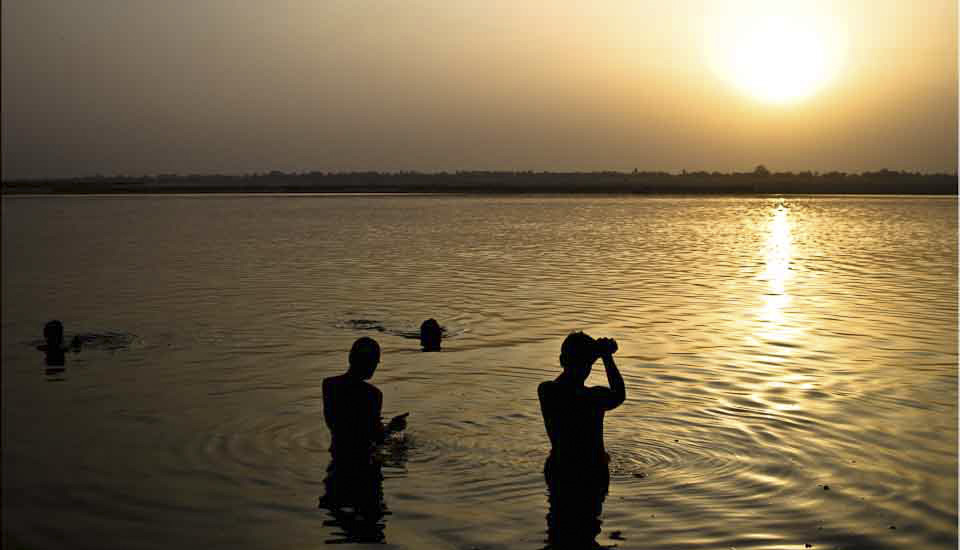



























 Beautiful Buddhas, Karma and a Sukhothai king ~
Beautiful Buddhas, Karma and a Sukhothai king ~












































































































.png)
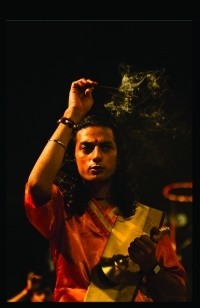
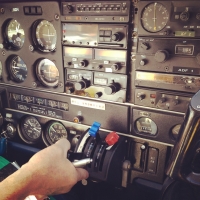
Excellent photo essay Ursula, I enjoyed your visit to Waterford!
I’m always pleased when you stop by, Kevin. Glad you enjoyed it!
[…] had pre-planned a visit with a friend in Waterford towards the beginning of our month in the Emerald Isle last year, and we had pre-booked our ten […]
[…] Distillery CrystalAs well as producing world-class whiskey, Ireland is known for its crystal (eg.: Waterford). It is only fitting then that awards for excellence and commemorative glasses be made from local […]